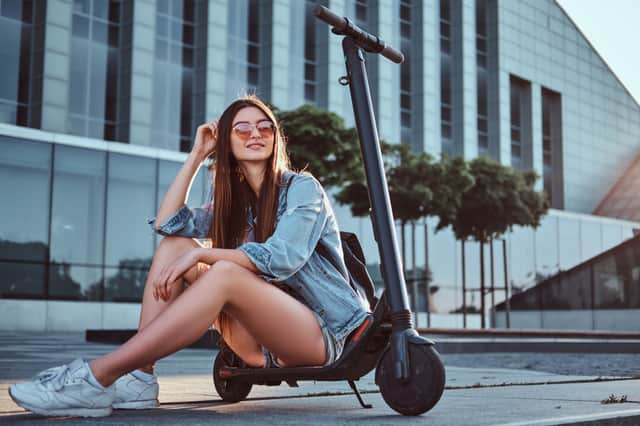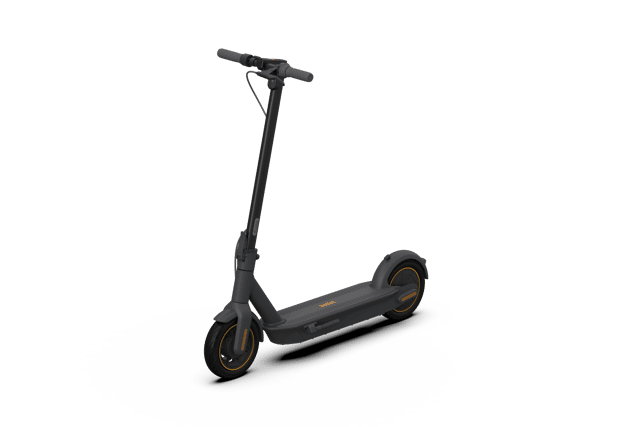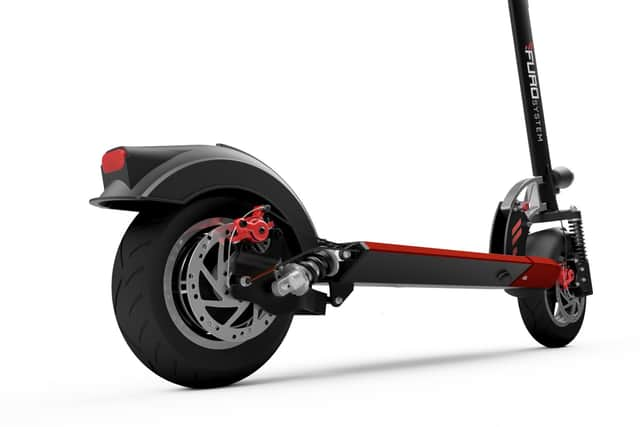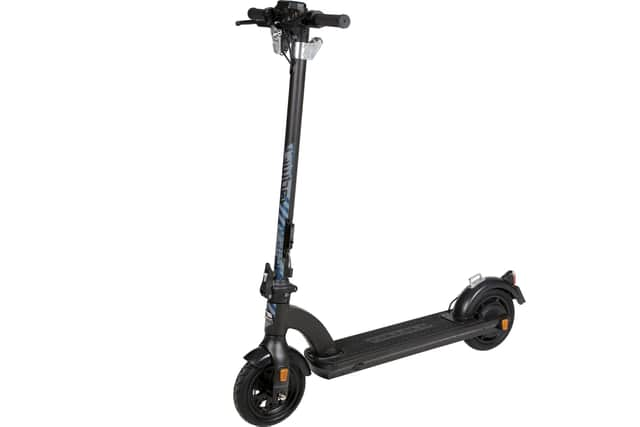Which are the best e-scooters available in the UK, and where is it legal to ride them?


This article contains affiliate links. We may earn a small commission on items purchased through this article, but that does not affect our editorial judgement.
Mobile, nifty, fun and easy to use - it’s little wonder e-scooters are so popular in the UK and Europe. They’re emission-free, swift, and allow their users independence.
Now, of course, an e-scooter won’t keep you fit, the way a bicycle will. But because they can be folded in half, you can board a standing-room-only train with an e-scooter without causing grief to other passengers, then scoot off to your final destination on the other side.
Where is it legal to drive electric scooters in the UK?
While it is perfectly legal to sell, buy and own an e-scooter, current UK law forbids their use anywhere other than on private land, and with the owner’s permission. However, in most big UK cities, thousands of riders are flouting the law every day and, in the vast majority of cases, getting away with it.
Electric scooters in the UK are currently governed by the 1835 Highways Act which restricts the use of Personal Light Electric Vehicles (PLEV) to private land.
Truth is, we are aeons behind other countries when it comes creating legislation that applies to e-scooters, though the government has at least started a series of e-scooter trials in a number of cities across the UK.
Nevertheless, we can expect the current legal situation to remain as is until at least late 2022.
Best e-scooters at a glance:
- Best budget buy: Pure Air Go, £349
- Best for commuting: Xiaomi Mi Pro 2, £529
- Best for leisure use: Carrera Impel is-1, £399
- Best for speed: Furo Fuze, £649
- Best for range: Segway Ninebot KickScooter MAX G30, £539
How do e-scooters work?
E-scooters are powered by rechargeable lithium batteries and are restricted to a top speed of 15.5mph (25kph), which is more than enough pace for safe riding. Any faster and those tiny 8.5- to 10-inch wheels may not be able to cope.
Most e-scooters have a maximum range per charge of around 20 miles which is exceptional given their diminutive dimensions.
The average e-scooter is equipped with a small handlebar-mounted thumb-activated lever or finger trigger that controls acceleration and speed.
Most models provide three different power bands – walking pace, cruise and sport. The majority of sensible riders tend to use the cruise speed setting which is set at a maximum of around 12mph, an ideal speed for general commuting and leisure riding.
The e-scooter will also have a display controller that’s often integrated into the handlebar stem. This LED display provides information like current speed, average speed, plus an odometer that records the total mileage covered. The majority of e-scooters can also be paired with an app for easier access to the controls and settings.
Many better-quality e-scooters are equipped with a kinetic energy recovery system (KERS) that harnesses electricity and feeds it back into the battery when the bike is coasting down hill or braking.
In order to start off with an e-scooter, you need to kick off with your foot to reach about 2mph before the brushless motor kicks in.
This is a safety requirement and it’s a good thing because it prevents the scooter from shooting off if you accidentally touch the trigger while it’s at a standstill. Most e-scooters are fitted with at least one rear disc brake but if you want better stopping power, consider a model with disc brakes fore and aft.
Since e-scooters are flying off the shelves, it’s in your interest to know which models are best.
Here is our pick of the best e-scooters currently on the market.


KEY SPECS:
Average range: 40 miles; Max rider weight: 100kg; Speed modes: 3; Weight: 19kgs
Pros: Phenomenal range; Simple to use; Fun
Cons: Heavy; Pricey
Segway is famous for its self-balancing personal transporters that have become really popular at many tourist attractions. The Ninebot is one of the most expensive e-scooters on test but it’s an exceptional scooter in many respects.
Yes, at 19kgs, it is unquestionably heavy and not capable of accommodating rider weights in excess of 100kgs, but on the other hand it has a massive range of up to 40 miles and uses three levels of regenerative braking to assist the front drum brake while feeding more juice back into the battery.
The Ninebot has a similar electronic dash display as the Xiaomi Mi, which is hardly surprising since Xiaomi now owns Segway.
This single-button controller is really easy to use though you do need to lift a hand off the handlebar when changing the speed mode function on the fly.
Despite its weight, the Segway Ninebot MAX G30 is a top choice for long-range commuting.


KEY SPECS:
Average range: 25 miles; Max rider weight: 150kg; Speed modes: 3; Weight: 19kgs
Pros: Rugged; Easy to adjust; Impressive range; Fun!
Cons: Heavy; Usually sold out
Furo Systems is a UK based company best known for its excellent range of electric bicycles. The Fuze is the company’s one and only e-scooter and a highly accomplished model it is, too.
Yes, it’s a hefty beast – too heavy to carry for more than a few minutes – but then it is rugged enough to accommodate riders of up 150kg in weight.
The Fuze is better equipped than most of its rivals since it comes with a wider deck, height-adjustable handlebars, front and rear lights, a horn, fatter 10-inch tyres and a very useful suspension system that helps it glide over gnarly Tarmac and even handle off-road terrain.
However, those fatter tyres also make it feel less nimble when cornering and, indeed, some users may initially find that it’s more difficult to steer until they get used to it.
The Furo X comes with disc brakes on the front and rear for excellent stopping power. However, the finger-controlled power trigger doesn’t feel as tactile as the thumb controllers on other models.
From a security point of view, this model also ships with a wireless car-style key fob for locking and unlocking.
Unlike most e-scooters which are restricted to 15.5mph, this beast can reach speeds of up to 25mph: mode one starts at 7mph, mode two reaches 15mph and mode three is off the scale.
For legality purposes, mode three should only be used in countries with higher speed restrictions.
If you’re in the market for an e-scooter that will leave everyone else in its wake, can be used on smooth off-road surfaces and carry heavier riders, this model ticks every box.

